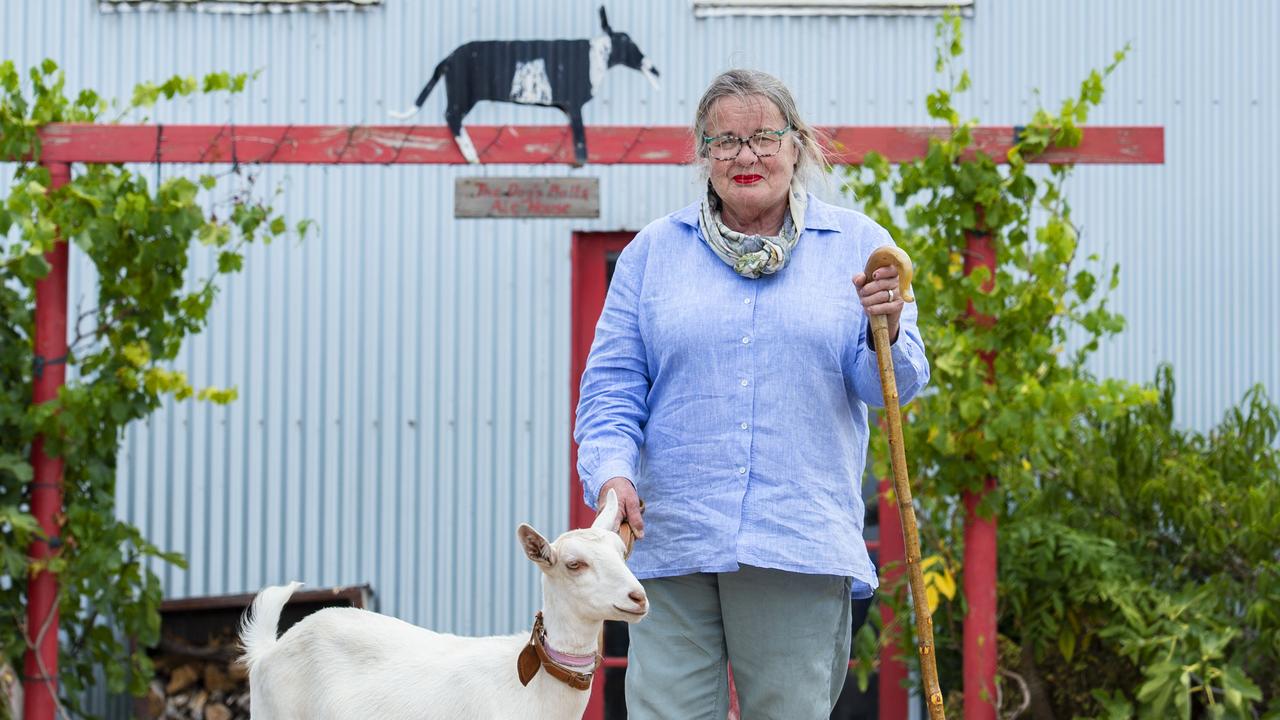Yates book author and horticulturalist Angie Thomas’ herb growing tips
Horticulturalist Angie Thomas, who has helped write just-released book Yates Top 50 Edible Plants for Pots and How Not to Kill Them! gives her best tips to get a thriving herb garden.

WERE you one of the many people who rushed out to garden stores at some point in lockdown to start growing your own herbs? Or did you make the shift even before that to avoid repetitive costs every time you needed some fresh bunch?
How are they going?
Thriving? Well done, you.
Not so well? That’s OK.
There are many ways growers can come unstuck in trying to establish their own healthy herb garden. Horticulturalist Angie Thomas — who has helped author the newly released Yates Top 50 Edible Plants for Pots and How Not to Kill Them! — is here to point out some of the most common mistakes, and how to avoid or correct them.
1. LACK OF WATER
THIS tip translates across to any potted plant, whether edible or not. Angie says while it is also possible to over-water herbs, it is more likely that people will not give them enough moisture. “Pots have a small amount of potting mix relative to what plants can have access to in the ground, and that heats up and dries out very quickly,” she says. Thankfully, there is a cheap, simple technology to check moisture levels — dig around the top few centimetres with your finger. “You’ll feel whether it’s dry and dusty, or feel if it is still moist and you can leave it for another few days.” While you’re there poking around, Angie suggests using the opportunity to look out for other issues, such as whether the plant needs a feed or is being attacked by pests.
2. MISMATCHED PLANT & POT SIZES
“YOU really need to continue to provide the right size of pot for the plant as it grows or keep it trimmed so it doesn’t outgrow its pot,” Angie says. For example, rosemary, one of the Mediterranean herbs, can grow quite large. You may limit a plant’s growth by planting it in a too-small pot. And also the smaller the pot, the faster it will dry out, and the faster it will run out of nutrients. ”So it’s three strikes when it comes to pots that are too small,” Angie says.
3. GROUPED THE WRONG HERBS TOGETHER
IF YOU’RE going to plant herbs together in the same pot, Angie says make sure you group them based on the conditions they need, such as the amount of water they need. The reverse is also true: keep your green, leafy, lush, herbs that need plenty of moisture — such as basil, coriander and mint — and dry-tolerant herbs — such as the Mediterranean herbs rosemary, sage and oregano — separate. “If you try to grow those two different groups in the same pot, one of them is not going to be happy.” she says. “It makes your life easier too, if you know that this particular pot needs much more

moisture than the others, it’s an easier way to maintain it.” And it is not just moisture that you need to keep in mind, but also sunlight — while the Mediterranean herbs like a full-sun position, others prefer partial-sun position. As with all plants, getting the correct amount of sun is important. “That’s one of the fantastic things about growing in pots — you can move your pots around to suit whatever you are growing … and find the sweet spot for the amount of sunlight,” Angie says.
4. NOT ENOUGH FEEDING
MOISTURE and feeding are two of the really key things to tick off to ensure you are keeping your potted plants healthy, including herbs, says Angie. “Particularly with herbs that we are continually harvesting from — if you think of things like basil, if you’re picking great big, fragrant handfuls of that, every time you are asking more of that plant to grow, they’re actually using up nutrients, so we need to replace that,” she says. “By feeding a plant, you put it in the best possible position to not only grow to its maximum potential, but also help it to be the strongest plant it can be so it can be less prone to pests and diseases.” If you choose to liquid fertilise — meaning you are topping up both moisture and nutrients at the same time — Angie encourages growers to do it every week, with a “little and often” mentality. For solid fertilisers, she says the amount of time they will provide nutrients for can vary, so check the information on the packet.
5. NOT HARVESTING REGULARLY
HERBS are there to be picked and eaten. Not doing this enough prompts the plant to grow or behave in ways that will not be helpful in your garden or kitchen. “What happens with plants is if you pinch out the tallest branch or stem, that encourages the side shoots to grow. So the more you pick, the bushier it will become and that means more stems and leaves,” Angie says. “Don’t be concerned about ‘I’m going to ruin the look of it’, ‘It is too young’ — you can actually start harvesting leaves and stems from quite young plants.” The other thing that regular picking does, particularly for annual herbs such as coriander and basil, is delaying it from setting seed. Angie adds that a good rule of thumb is not to pick any more than 50 per cent of a particular plant at any one time.
● Yates Top 50 Edible Plants for Pots and How Not to Kill Them! by Angie Thomas and Yates, is published by HarperCollins. RRP $35, available now


